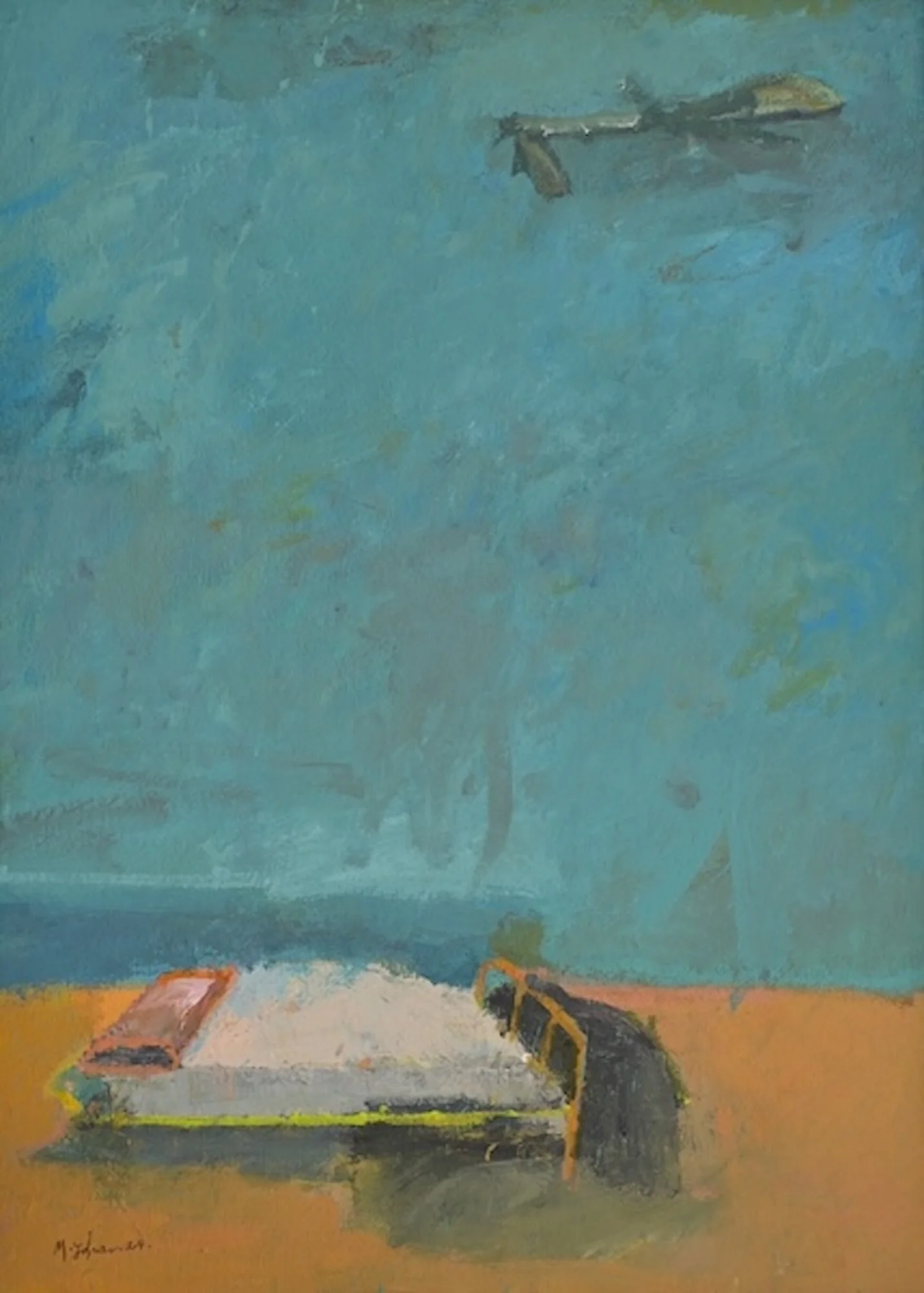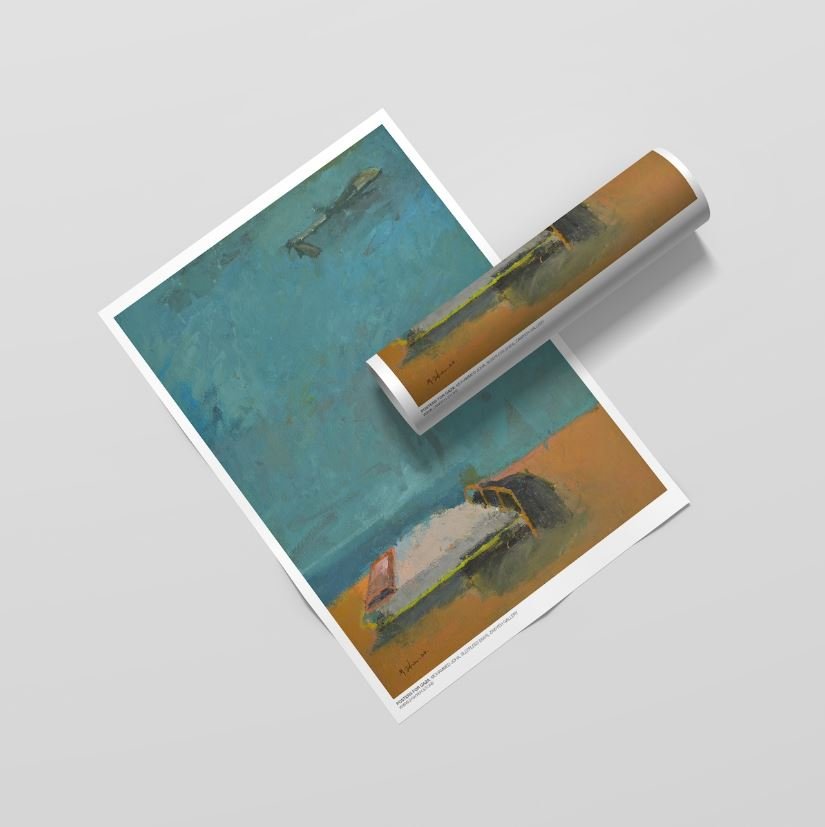Sleepless by Mohammed Joha
Sleepless by Mohammed Joha
42 x 30 cm (16.54 x 11.81 in)
FineArt archival paper, 230 gsm
Proceeds from the online poster sale will provide much-needed medical aid to affected children in Gaza, through The Palestine Red Crescent Society.
Mohammed Joha was born in 1978 in Gaza. He lives and works between Paris and Marseille. Joha received his bachelor›s degree from the Department of Art Education at Al-Aqsa University in Gaza in 2003 and then joined the summer academy at Darat Al-Funun, Khaled Shoman Foundation, in Amman, under the supervision of the late Syrian artist Marwan Kassab-Bashi. In 2004, Joha won the Young Artist Award of the A.M. Qattan Foundation, after which he was awarded a series of residencies at the International City of Arts in Paris, where he worked to develop his experience, participating in solo and group exhibitions in Europe and the region. He worked for years in the field of painting, and his work was characterized by the spontaneous expressive style using multiple techniques, such as drawing, collage, installation, and other media.
Joha has developed a unique expressionistic style of collage with a strong esthetical appeal and multi-layered narrative. Joha’s recent compositions are built on a skeleton of architectural horizontal and vertical lines, organically bent into variation, crossed by precise details appearing on the scene, and brought to life by the colorful materials he uses, including old cloth, paper, and carton. The depth and appeal of his artwork derive from the formal and clear composition on the one hand, alongside the playful, organic, and carefully placed colorful and light interaction of material and, on the other hand, the serious, suffocating, and devastating reality behind his compositions. Representing the chaotic and organic architecture in Gaza, destroyed, and rebuilt, devastated, rebuilt again with only cloth and whatever else there is as building material, Joha tells the endless story of living in over generations of institutionalized confinement, under the ever-underlying threat of re-destruction, while the over densely populated area steadily grows in terms people living in it. The architectural representation in Joha’s work hints in an unobtrusively direct fashion at the society it houses, caught for eternity between the explicitly temporary nature of their homes, whilst throughout latest history becoming the only perspective there is since and for generations.


